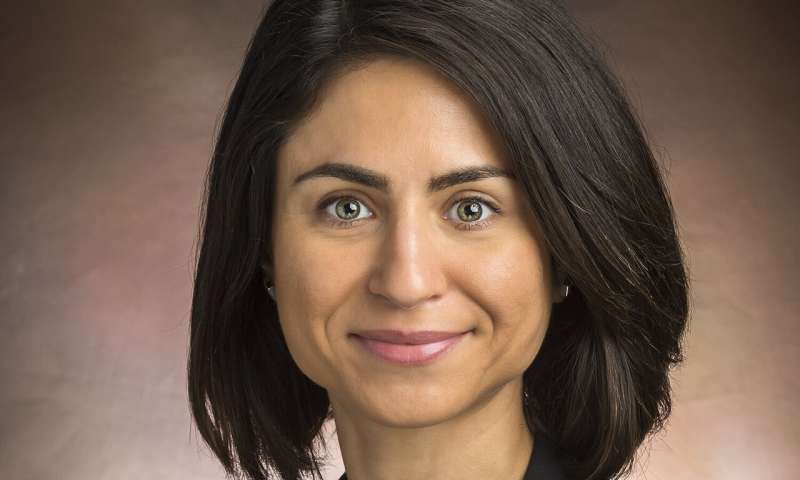Early spinal patterns may predict scoliosis in teen years

A pediatric researcher has identified patterns of spinal curvature in younger children that may be likely to develop into scoliosis by adolescence. Accurately predicting scoliosis, a common, abnormal curvature of the spine, may set the stage for the first-ever methods to prevent the potentially disabling condition.
“This was the first study to quantitatively explain how variation in spinal patterns may lead to the spinal deformities seen in scoliosis, and may eventually guide us to early interventions for children at risk,” said researcher Saba Pasha, Ph.D., director of Orthopaedic Engineering and 3-D Musculoskeletal Imaging at Children’s Hospital of Philadelphia. Her study appeared online Nov. 11 in Nature Scientific Reports.
Pediatric scoliosis is the most common spinal deformity worldwide, occurring over a range of severity in up to 4 percent of children. Although it may be caused by specific diseases, most adolescent scoliosis is idiopathic—the cause remains unknown. Researchers have found evidence of genetic influences, but the underlying mechanisms of the spinal instability in scoliosis are poorly understood.
In the current study, Pasha used computer simulations to investigate how elastic rods, modeling children’s spines, change shape in response to mechanical loading. She borrowed the concept from other researchers who simulate how DNA molecules and proteins change their structure in response to a variety of factors.
In the current study, Pasha drew on spinal X-rays of 129 adolescents with or without scoliosis. Computer analysis transformed those images into 2-dimensional (2-D) patterns, designated sagittal spinal profiles. She used those patterns to create S-shaped elastic rods in the computer simulation and applied simulated mechanical forces to observe how those rods deformed in 3-dimensional (3-D) shapes. The results were intriguing.
Under this simulated mechanical force, S-shaped 2-D patterns in the model deformed into the 3-D patterns seen in scoliosis patients with the same sagittal curve. However, the rods in the model that represented the sagittal curves of patients without scoliosis did not twist into a 3-D scoliosis-like deformation. This model provides strong evidence, said Pasha, that the shape of a person’s sagittal profile can be a leading cause of scoliosis.
Much research remains to be done, said Pasha, to determine whether the spinal shapes seen in images from younger patients can be developed into a risk-assessment tool to predict whether a 10-year-old is likely to develop scoliosis during their teenage years.
Source: Read Full Article



